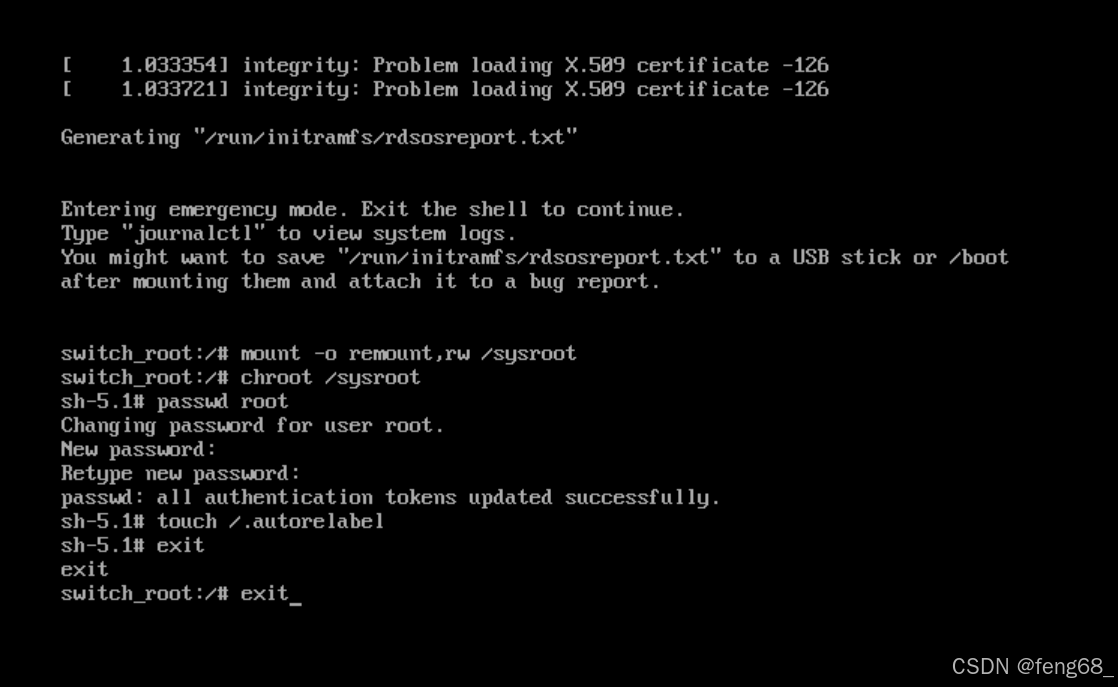文章目录
- 前言
- 一、list 的用法
- 1. list 简介
- 2. 用法代码演示
- 1)头/尾 插/删和迭代器遍历
- 2)insert与erase
- 3)排序sort相关
- 4)其他相关
- 二、list模拟实现
- 1. 结点类模板list_node
- 2. 定义迭代器
- 1)为什么要专门封装一个迭代器?
- 2)迭代器类的实现
- (1)普通迭代器
- 初始化
- operator*与operator->
- operator++
- operator!=
- (2)const迭代器——参数T以及为什么有三个参数?
- (3)迭代器代码实现
- 3. list类实现
- 1)成员变量
- 2)迭代器接口相关
- 3)构造相关
- 4)插入删除相关
- (1)insert与erase及其迭代器失效问题
- (2)头插/头删/尾插/尾删
- 三、list与vector对比
- 模拟实现list完整代码
前言
今天我们一起来看看C++中stl库里list是什么样子的,以及模拟实现list~

一、list 的用法
1. list 简介

第一个参数是模板类型,第二个参数是空间配置器我们先暂时不管他。
list的在stl中就是一个双向带头循环链表,它的使用比vector简单一些。
stl这些风格接口都是一样的,他的构造也是这样。

因为list是链式结构,因此他的访问和遍历不会用到operator[],而是通过迭代器来遍历,对于插入删除操作除了push_back,insert等等这些,还提供了头插头删这样的接口,因为他们不用进行数据的挪动。
2. 用法代码演示
1)头/尾 插/删和迭代器遍历
#include<list>
int main()
{
list<int> lt;
lt.push_back(1);
lt.push_back(2);
lt.push_back(3);
lt.push_back(4);
lt.push_back(5);
lt.push_front(30);
lt.push_front(88);
list<int>::iterator it = lt.begin();
while (it != lt.end())
{
cout << *it << " ";
++it;
}
cout << endl;
for (auto e : lt)
{
cout << e << " ";
}
cout << endl;
lt.pop_back();
lt.pop_back();
for (auto e : lt)
{
cout << e << " ";
}
cout << endl;
lt.pop_front();
lt.pop_front();
for (auto e : lt)
{
cout << e << " ";
}
cout << endl;
return 0;
}
2)insert与erase
首先,list的底层空间不是连续的,不能直接通过偏移量访问指定位置(如lt.begin() + 5会报错)。其次,insert操作不会导致迭代器失效,因为list的插入操作不需要扩容,插入后迭代器仍指向有效的逻辑位置。相反,erase操作会导致迭代器失效,删除后需要用返回值更新迭代器以避免野指针。最后,在删除元素时(如删除偶数),应通过erase返回的迭代器更新循环变量,确保迭代器有效。
void test02()
{
list<int> lt;
lt.push_back(1);
lt.push_back(2);
lt.push_back(3);
lt.push_back(4);
lt.push_back(5);
for (auto e : lt)
{
cout << e << " ";
}
cout << endl;
//list的空间不是连续的,+5 并不能找到list中第5个位置,这样写编译器会报错的
//lt.insert(lt.begin() + 5, 10);
list<int>::iterator it = lt.begin();
while (it != lt.end())
{
it++;
}
lt.insert(it, 89);
for (auto e : lt)
{
cout << e << " ";
}
cout << endl;
//对于insert,迭代器不会失效,因为插入数据list不牵扯扩容,it所指向的逻辑位置也不发生改变
//库里的没找到会返回last的位置
it = find(lt.begin(), lt.end(), 3);
if (it != lt.end())
{
lt.insert(it, 30);
// insert以后,it不失效
*it *= 100;
}
for (auto e : lt)
{
cout << e << " ";
}
cout << endl;
//但是对于erase,使用过后迭代器会失效
it = find(lt.begin(), lt.end(), 2);
if (it != lt.end())
{
lt.erase(it);
// erase以后,it失效,她的空间已经没了,就是一个野指针
//*it *= 100;
}
for (auto e : lt)
{
cout << e << " ";
}
cout << endl;
//要解决这个问题,可以拿iterator做返回值接收,更新it的值
it = lt.begin();
//还是我们的老朋友,删除list中偶数
while (it != lt.end())
{
if (*it % 2 == 0)
{
//就是这里
it = lt.erase(it);
}
else
it++;
}
for (auto e : lt)
{
cout << e << " ";
}
cout << endl;
}
3)排序sort相关
由于list的迭代器是双向的,不能直接用标准库的sort(因为那是针对随机访问迭代器设计的快排),所以list自带了sort方法,它内部用的是归并排序。接着,代码还演示了两种反转方式:你可以用标准库的reverse函数,也可以直接用list的reverse方法。二者效果相同。


void test03()
{
list<int> lt;
lt.push_back(5);
lt.push_back(4);
lt.push_back(3);
lt.push_back(2);
lt.push_back(1);
//库中的sort不可以,因为库中的排序是快排,迭代器的种类是随机,而这里迭代器的种类是双向
//sort(lt.begin(), lt.end());
//因此库中提供了一种底层为归并排序的排序
lt.sort();
for (auto e : lt)
{
cout << e << " ";
}
cout << endl;
//list中还有类似逆置,交换这样的,库中和这里的都可以用
reverse(lt.begin(), lt.end());
for (auto e : lt)
{
cout << e << " ";
}
cout << endl;
lt.reverse();
for (auto e : lt)
{
cout << e << " ";
}
cout << endl;
}
当然,list中的排序我们是不建议用的,要对list中的数据进行排序,我们应该将其转化成vector,然后调用快排,最后在拷贝回去。
下面这是一段性能测试的代码:
可以看到,越大数据下快排性能越好
void test_op()
{
srand(time(0));
const int N = 100000;
vector<int> v;
v.reserve(N);
list<int> lt1;
list<int> lt2;
for (int i = 0; i < N; ++i)
{
auto e = rand();
lt2.push_back(e);
lt1.push_back(e);
}
// 拷贝到vector排序,排完以后再拷贝回来
int begin1 = clock();
// 先拷贝到vector
for (auto e : lt1)
{
v.push_back(e);
}
// 排序
sort(v.begin(), v.end());
// 拷贝回去
size_t i = 0;
for (auto& e : lt1)
{
e = v[i++];
}
int end1 = clock();
int begin2 = clock();
lt2.sort();
int end2 = clock();
printf("vector sort:%d\n", end1 - begin1);
printf("list sort:%d\n", end2 - begin2);
}
4)其他相关
第一是remove,它用来删除链表中指定的值,找到了就删,找不到就不做任何操作。这个操作比较简单直接。
第二个是unique,它用来去除链表中的重复元素,但通常需要先排序,这样可以确保去重更高效。unique只会保留相邻元素中的一个,所以排序是去重前的重要一步。
第三个是splice,它用来将一段结点转移到另一个结点的后面。splice有几种用法,可以转移整个list、单个元素或一段区间的元素。splice不会创建新元素,而是直接在链表节点间重新链接,效率很高。
void test04()
{
int myints[] = { 17,89,7,14 };
/*std::list<int> mylist(myints, myints + 4);
//remove是删除特定的值,找到了就删除,没找到就什么也不干
mylist.remove(890);
for (auto e : mylist)
{
cout << e << " ";
}
cout << endl*/;
//unique是去重,一般要先排序,这要去重效率高
//mylist.sort(); // 2.72, 3.14, 12.15, 12.77, 12.77,
15.3, 72.25, 72.25, 73.0, 73.35
//mylist.unique(); // 2.72, 3.14, 12.15, 12.77
15.3, 72.25, 73.0, 73.35
std::list<int> mylist1, mylist2;
std::list<int>::iterator it;
// set some initial values:
for (int i = 1; i <= 4; ++i)
mylist1.push_back(i); // mylist1: 1 2 3 4
for (int i = 1; i <= 3; ++i)
mylist2.push_back(i * 10); // mylist2: 10 20 30
for (auto e : mylist1)
{
cout << e << " ";
}
cout << endl;
for (auto e : mylist2)
{
cout << e << " ";
}
cout << endl << endl;
it = mylist1.begin();
++it; // points to 2
//转移是从iterator的位置,转移另一个list (整个/第i个位置/一个迭代区间)
// 全部转移
mylist1.splice(it, mylist2);
// 部分转移
//mylist1.splice(it, mylist2, ++mylist2.begin());
//mylist1.splice(it, mylist2, ++mylist2.begin(), mylist2.end());
//转移自己
//mylist1.splice(mylist1.begin(), mylist1, ++mylist1.begin(), mylist1.end());
for (auto e : mylist1)
{
cout << e << " ";
}
cout << endl;
for (auto e : mylist2)
{
cout << e << " ";
}
cout << endl;
}
二、list模拟实现
1. 结点类模板list_node
首先,要写出一个list,就需要先写出它的每一个结点的构成,这里的结构是我们之前学过的双向链表,为了泛用性,list的结点数据可以是任意类型的数据,因此我们需要写成类模板。
与双向链表一样,我们这里有三个变量分别是_next(后继), _prev(前驱), val(值),
并利用初始化模板将其初始化
template<class T>
struct list_node
{
list_node<T>* _next;
list_node<T>* _prev;
T _val;
list_node(const T& val = T())
:_next(nullptr)
,_prev(nullptr)
,_val(val)
{}
};
2. 定义迭代器
1)为什么要专门封装一个迭代器?
list不想string和vector,它们两个的底层是由数组实现的,它们的迭代器就是其原生指针,因为原生指针就可以满足迭代器的行为。
迭代器所需要做到的行为如下:
*:解引用获取迭代器对应的值,类似与指针解引用获得值
!=:如:判断迭代器到没到end()等应用
++/--:迭代器迭代到下一个地点
对于vector来说,他的迭代器可以完美符合以上几点,因为vector底层空间是连续的,是数组,就像这样:

但是,对于
list还能这样吗?
答案是不能,因为list底层不是连续的,*it并不是对应的值,而是一个结点,++it并不能让it指向下一个结点,因为空间是不连续的,++后指到哪里谁也不知道。
因此现有的
迭代器的行为不符合我们的预期,我们期望的是迭代器表层使用的方式是一致的,因此我们写一个类,封装迭代器,用运算符重载来改变迭代器的行为,使他符合我们的预期。
2)迭代器类的实现
(1)普通迭代器
初始化
Node* _node;
__list_iterator(Node* node)
:_node(node)
{}
operator*与operator->
我们先不关心它的返回值,我们先来让他符合我们的预期。
我们想让*返回的不是它的结点,而是结点中的值。
我们想让->返回的是T类型值(结构体)的地址。
注意:

Ref operator* ()
{
return _node->_val;
}
Ptr operator-> ()
{
return &_node->_val;
}
operator++
我们想让operator++能到下一个结点的位置,--同理,因此需要让_node = _node->next,而不是指针地址的++,因为结点与结点之间空间是不连续的。
self& operator++()
{
_node = _node->_next;
return *this;
}
self operator++(int)
{
self tmp(*this);
_node = _node->_next;
return tmp;
}
self& operator--()
{
_node = _node->_prev;
return *this;
}
self operator--(int)
{
self tmp(*this);
_node = _node->_prev;
return tmp;
}
operator!=
我们想让迭代器的对应的结点与结点比较,而不是迭代器本身。
bool operator!= (const self& it)
{
return _node != it._node;
}
bool operator== (const self& it)
{
return _node == it._node;
}
(2)const迭代器——参数T以及为什么有三个参数?
在学习list迭代器的封装时,我们发现了一个很神奇的现象,就是迭代器的模板参数居然有3个!!!
这是为什么呢?
有T在这个地方我们都能理解,因为迭代器的类型就是T,也就是我们list的类型,那为什么还要这个Ref和Ptr呢?
其实原因都是const迭代器搞的鬼。
我们在实现const的版本的时候,遇到一些非常坑的问题。
首先,这样设计const迭代器可以吗?
// typedef const __list_iterator<T> const_iterator;
答案是不可以,因为这样设计const迭代器是不行的,因为const迭代器期望指向内容不能修改
这样设计是迭代器本身不能修改,我们迭代器本身是要++的,不能改变的是它的值。
第二个问题,我们发现,const迭代器与普通迭代器的不同仅仅是因为迭代器所指向的值不能修改,那const迭代器不就是重载
operator*的时候加一个const吗?
//typedef __list_const_iterator const_iterator;
但是问题是,这样设计太冗余了,有大量重复的代码,改变的仅仅是operator*前加const以及函数名字。
因此我们的解决方法是:增加一个模板参数Ref,它的作用是typedef定义const_iterator的时候,传得参数有一个是const与普通迭代器不一样,而operator*的返回值就使用Ref.
而Ref就是T的引用,与返回值保持一致.
像这样:
那么,第三个参数Ptr是什么呢?
类似于operator*,在对自定义类型解引用的方式还有->。
比如我们下面有一个类:
class A
{
public:
A(int a = 0, int b = 0)
: _a(a)
, _b(b)
{}
int _a;
int _b;
};
我们想对这个类用迭代器遍历它的值有两种方式:
- 通过重载的
operator*解引用,然后.出A类的_a和_b. - 通过
operator->直接访问到_a和_b.

而对于const对象,我们就不能直接调用operator->,因为会造成权限放大,所以我们引入了第三个模板参数Ptr表示T类型的指针,用它来区别const对象和普通对象。
因此operator->的返回值就成了Ptr。

实际上,传不同的模板参数,就是生成了不同的模板,我们这样写其实就是让编译器帮我们写了之前那个冗余的写法,是我们代码更简洁,可读性更高~
(3)迭代器代码实现
template<class T, class Ref, class Ptr>
struct __list_iterator
{
typedef list_node<T> Node;
typedef __list_iterator<T, Ref, Ptr> self;
Node* _node;
__list_iterator(Node* node)
:_node(node)
{}
Ref operator* ()
{
return _node->_val;
}
Ptr operator-> ()
{
return &_node->_val;
}
self& operator++()
{
_node = _node->_next;
return *this;
}
self operator++(int)
{
self tmp(*this);
_node = _node->_next;
return tmp;
}
self& operator--()
{
_node = _node->_prev;
return *this;
}
self operator--(int)
{
self tmp(*this);
_node = _node->_prev;
return tmp;
}
bool operator!= (const self& it)
{
return _node != it._node;
}
bool operator== (const self& it)
{
return _node == it._node;
}
};
3. list类实现
1)成员变量
对于每一个链表,我们需要直到它的哨兵位,还有它的大小。
private:
Node* _head;
size_t _size;
2)迭代器接口相关
前面我们定义了迭代器类,现在我们要用它获取begin()与end()。
对于带头双向循环链表来说,begin()是第一个位置的元素,也就是哨兵位的下一个,end()是最后一个元素的下一个位置,也就是又回到了哨兵位。
typedef __list_iterator<T, T&, T*> iterator;
typedef __list_iterator<T, const T&, const T*> const_iterator;
iterator begin()
{
//这里做了隐式类型转换
return _head->_next;
//也可以写成这样
//return iterator(head->_next);
}
iterator end()
{
//这里做了隐式类型转换
return _head;
//也可以写成这样
//return iterator(head);
}
const const_iterator begin() const
{
return _head->_next;
}
const const_iterator end() const
{
return _head;
}
3)构造相关
构造函数:
void empty_init()
{
_head = new Node;
_head->_next = _head;
_head->_prev = _head;
_size = 0;
}
list()
{
empty_init();
}
拷贝构造:
这里依然沿用vector那里拷贝构造的思想,复用push_back来做到深拷贝。
list(const list<T>& lt)
{
empty_init();
for (auto& e : lt)
{
push_back(e);
}
}
赋值重载
使用现代写法。
void swap(list<T>& lt)
{
std::swap(_head, lt._head);
std::swap(_size, lt._size);
}
T& operator=(list<T> lt)
{
swap(lt);
return *this;
}
析构函数
复用clear,再把头结点清理掉。
对于clear来说,vector的空间要释放必须完全释放,所以它只清理值,不回收空间,而list结点之间不连续,因此可以直接回收空间,当然,哨兵位是不动的。
~list()
{
clear();
delete _head;
_head = nullptr;
}
void clear()
{
iterator it = begin();
while (it != end())
{
it = erase(it);
}
_size = 0;
}
4)插入删除相关
(1)insert与erase及其迭代器失效问题
insert任意位置插入
逻辑完全就是双链表的逻辑,先开辟出新结点空间,在改变对应的指向。
insert无法对pos进行断言,哪里插入都可以。
iterator insert(iterator pos, const T& x)
{
Node* cur = pos._node;
Node* prev = cur->_prev;
Node* newnode = new Node(x);
prev->_next = newnode;
newnode->_next = cur;
cur->_prev = newnode;
newnode->_prev = prev;
++_size;
return newnode;
}
因为list空间是不连续的,因此这里也不用扩容,对于insert来说,迭代器不失效。
erase删除任意位置的数据
erase需要对pos位置进行断言,pos不能改变我们的头结点,而end()就是头结点。
iterator erase(iterator pos)
{
assert(pos != end());
Node* cur = pos._node;
Node* prev = cur->_prev;
Node* next = cur->_next;
prev->_next = next;
next->_prev = prev;
delete cur;
--_size;
return next;
}
因为删除了这一个结点,而迭代器又指向这个结点空间,因此erase后迭代器会失效,是铁铁的野指针!
(2)头插/头删/尾插/尾删
逻辑与vector一样,直接复用insert与erase就好。
void push_back(const T& x)
{
/*Node* newnode = new Node(x);
newnode->_next = head;
newnode->_prev = head->_prev;
head->_prev->_next = newnode;
head->_prev = newnode;*/
insert(end(), x);
}
void push_front(const T& x)
{
insert(begin(), x);
}
void pop_back()
{
erase(--end());
}
void pop_front()
{
erase(begin());
}
三、list与vector对比
下面是 vector 和 list 的对比表格,涵盖了它们的主要特性和性能:
| 特性 | vector | list |
|---|---|---|
| 底层结构 | 动态顺序表,一段连续空间 | 带头结点的双向循环链表 |
| 随机访问 | 支持随机访问,访问某个元素效率 O(1) | 不支持随机访问,访问某个元素效率 O(N) |
| 插入和删除 | 任意位置插入和删除效率低,需要搬移元素,时间复杂度 O(N),插入时有可能需要增容,增容:开辟新空间,拷贝元素,释放旧空间,导致效率更低 | 任意位置插入和删除效率高,不需要搬移元素,时间复杂度为 O(1) |
| 空间利用率 | 底层为连续空间,不容易造成内存碎片,空间利用率高,缓存利用率高 | 底层节点动态开辟,小节点容易造成内存碎片,空间利用率低,缓存利用率低 |
| 迭代器 | 原生态指针,对原生态指针(节点指针)进行封装 | 迭代器封装了节点指针 |
| 迭代器失效 | 在插入元素时,要给所有的迭代器重新赋值,因为插入元素有可能会导致重新扩容,致使原来迭代器失效,删除时,当前迭代器需要重新赋值否则会失效 | 插入元素不会导致迭代器失效,删除元素时,只会导致当前迭代器失效,其他迭代器不受影响 |
| 使用场景 | 需要高效存储,支持随机访问,不关心插入删除效率 | 大量插入和删除操作,不关心随机访问 |
总结
vector更适合需要频繁随机访问和对存储效率要求较高的场景,但在插入和删除时性能较低。list更适合需要频繁插入和删除操作的场景,尤其是在中间位置进行操作时效率高,但不支持随机访问。
模拟实现list完整代码
#pragma once
#include<assert.h>
#include<iostream>
using namespace std;
namespace jyf
{
template<class T>
struct list_node
{
list_node<T>* _next;
list_node<T>* _prev;
T _val;
list_node(const T& val = T())
:_next(nullptr)
,_prev(nullptr)
,_val(val)
{}
};
template<class T, class Ref, class Ptr>
struct __list_iterator
{
typedef list_node<T> Node;
typedef __list_iterator<T, Ref, Ptr> self;
Node* _node;
__list_iterator(Node* node)
:_node(node)
{}
Ref operator* ()
{
return _node->_val;
}
Ptr operator-> ()
{
return &_node->_val;
}
self& operator++()
{
_node = _node->_next;
return *this;
}
self operator++(int)
{
self tmp(*this);
_node = _node->_next;
return tmp;
}
self& operator--()
{
_node = _node->_prev;
return *this;
}
self operator--(int)
{
self tmp(*this);
_node = _node->_prev;
return tmp;
}
bool operator!= (const self& it)
{
return _node != it._node;
}
bool operator== (const self& it)
{
return _node == it._node;
}
};
template<class T>
class list
{
typedef list_node<T> Node;
public:
typedef __list_iterator<T, T&, T*> iterator;
typedef __list_iterator<T, const T&, const T*> const_iterator;
iterator begin()
{
//这里做了隐式类型转换
return _head->_next;
//也可以写成这样
//return iterator(head->_next);
}
iterator end()
{
//这里做了隐式类型转换
return _head;
//也可以写成这样
//return iterator(head);
}
const const_iterator begin() const
{
return _head->_next;
}
const const_iterator end() const
{
return _head;
}
void empty_init()
{
_head = new Node;
_head->_next = _head;
_head->_prev = _head;
_size = 0;
}
list()
{
empty_init();
}
list(const list<T>& lt)
{
empty_init();
for (auto& e : lt)
{
push_back(e);
}
}
void swap(list<T>& lt)
{
std::swap(_head, lt._head);
std::swap(_size, lt._size);
}
T& operator=(list<T> lt)
{
swap(lt);
return *this;
}
~list()
{
clear();
delete _head;
_head = nullptr;
}
void clear()
{
iterator it = begin();
while (it != end())
{
it = erase(it);
}
_size = 0;
}
void push_back(const T& x)
{
/*Node* newnode = new Node(x);
newnode->_next = head;
newnode->_prev = head->_prev;
head->_prev->_next = newnode;
head->_prev = newnode;*/
insert(end(), x);
}
void push_front(const T& x)
{
insert(begin(), x);
}
void pop_back()
{
erase(--end());
}
void pop_front()
{
erase(begin());
}
iterator insert(iterator pos, const T& x)
{
Node* cur = pos._node;
Node* prev = cur->_prev;
Node* newnode = new Node(x);
prev->_next = newnode;
newnode->_next = cur;
cur->_prev = newnode;
newnode->_prev = prev;
++_size;
return newnode;
}
iterator erase(iterator pos)
{
assert(pos != end());
Node* cur = pos._node;
Node* prev = cur->_prev;
Node* next = cur->_next;
prev->_next = next;
next->_prev = prev;
delete cur;
--_size;
return next;
}
size_t size()
{
return _size;
}
private:
Node* _head;
size_t _size;
};
void Print(const list<int>& lt)
{
list<int>::const_iterator it = lt.begin();
while (it != lt.end())
{
// (*it) += 1;
cout << *it << " ";
++it;
}
cout << endl;
}
void test_list01()
{
list<int> lt;
lt.push_back(1);
lt.push_back(2);
lt.push_back(3);
lt.push_back(4);
lt.push_back(5);
list<int>::iterator it = lt.begin();
while (it != lt.end())
{
cout << *it << " ";
++it;
}
cout << endl;
for (auto& e : lt)
{
cout << e << " ";
}
cout << endl;
}
class A
{
public:
A(int a = 0, int b = 0)
: _a(a)
, _b(b)
{}
int _a;
int _b;
};
void test_list02()
{
list<A> lt;
lt.push_back(A(1, 1));
lt.push_back(A(2, 2));
lt.push_back(A(3, 3));
lt.push_back(A(4, 4));
list<A>::iterator it = lt.begin();
while (it != lt.end())
{
cout << (*it)._a << " " << (*it)._b << endl;
++it;
}
cout << endl;
it = lt.begin();
while (it != lt.end())
{
cout << it->_a << " " << it->_b << endl;
++it;
}
cout << endl;
}
void test_list03()
{
list<int> lt;
lt.push_back(1);
lt.push_back(2);
lt.push_back(3);
lt.push_back(4);
lt.push_front(5);
lt.push_front(6);
lt.push_front(7);
lt.push_front(8);
for (auto e : lt)
{
cout << e << " ";
}
cout << endl;
lt.pop_front();
lt.pop_back();
for (auto e : lt)
{
cout << e << " ";
}
cout << endl;
lt.clear();
lt.push_back(10);
lt.push_back(20);
lt.push_back(30);
lt.push_back(40);
for (auto e : lt)
{
cout << e << " ";
}
cout << endl;
cout << lt.size() << endl;
}
void test_list04()
{
list<int> lt;
lt.push_back(1);
lt.push_back(2);
lt.push_back(3);
lt.push_back(4);
for (auto e : lt)
{
cout << e << " ";
}
cout << endl;
list<int> lt1(lt);
for (auto e : lt1)
{
cout << e << " ";
}
cout << endl;
list<int> lt2;
lt2.push_back(10);
lt2.push_back(20);
lt2.push_back(30);
lt2.push_back(40);
for (auto e : lt2)
{
cout << e << " ";
}
cout << endl;
lt1 = lt2;
for (auto e : lt1)
{
cout << e << " ";
}
cout << endl;
}
}
到这里模拟实现list就结束啦~
谢谢大家!
























